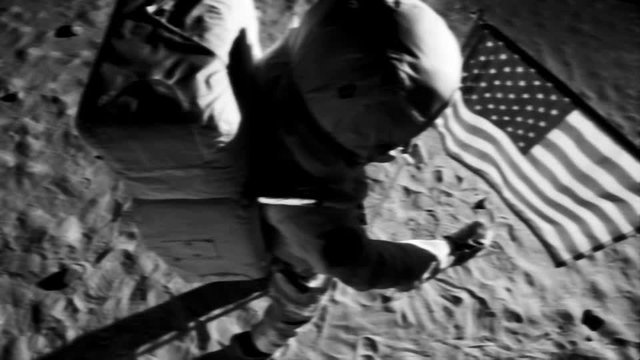Lucid Dreaming
Lucid dreaming is the conscious realisation that you are dreaming, becoming fully aware and 'awake' while still asleep. Most people have had one at some time or another. The concept garnered some popularity around the release of Inception and was a main theme in the film Waking Life.
Usually when you tell someone you are interested in lucid dreaming, you might as well have said that you dowse for spirit crystals under the light of a full moon. But unlike astrology, homeopathy, and good indie music, this phenomenon has been empirically demonstrated to exist. With enough practice, it can be induced at will.
For a long time, the validity of lucid dream reports was considered untestable as there was no way to communicate to the outside world from the dream state. Lucidity was explained away as a brief awakening or false memory, sometimes theorised to be impossible or absurd. Then in 1975, psychologist Keith Hearne realised that since the full-body paralysis which occurs during sleep does not affect the eye musculature, it might be possible for a dreamer to signal the onset of lucidity with deliberate ocular motion. A subject would be required to make an agreed-upon sequence of left-right eye movements after entering REM sleep, which could then be observed by a collaborator with an EOG machine. He confirmed this on the 12th of April 1975 with the first ever recorded signal from within a dream.

This opened up a broad new avenues of research for oneirology (the scientific study of dreams). Around the same time, researcher Stephen LaBerge duplicated Hearne's results independently, which became the first peer reviewed publication on the technique. Through the eighties, LaBerge experimented and developed methods to achieve lucidity at will. In 1995 he published the seminal book Exploring the World of Lucid Dreaming, which summarises a decade of his research- a sort of How To for aspiring lucid dreamers.
"Further practice and refinements led to a method whereby I could reliably induce lucid dreams. With this new method, I had as many as four lucid dreams in one night, and as many as twenty-six in one month."
-- Stephen Laberge, Exploring the World of Lucid Dreaming (p.73)
So while you are desperately trying to build a mozzarella rope bridge to escape a swarm of tiny pensioners, LaBerge is probably walking flying around his dreamscape like Neo in the matrix, punching helicopters out of the sky with flaming plasma fists. Or cackling madly in an underground bone palace crafted from the charred remains of his enemies (who knows?).
Alright, sounds cool. How do I do it?
The idea is pretty straight-forward. In order to realise you're dreaming, you need to be in the habit of questioning reality often enough in waking life for it to become an automatic unconscious action. These 'state tests' can make use of certain oddities of dreams- examples such as light switches not working, the appearance of dreamsigns (more on that in a second), or text appearing jumbled up. Or you can simply do a quick mental exercise: am I awake? Is there anything strange about my situation? How did I get here? To practice, LaBerge recommends setting yourself targets each day of doing a reality check on pre-defined triggers. For example:
Sunday
- The next time I see a pet or animal
- The next time I look at my face in a mirror
- The next time I turn on a light
- The next time I bite the head off a pigeon
Monday
- The next time I write anything down
- The next time I hear someone say my name
- The next time I drink something
- The next time I reload my crossbow
If you are unable to remember to perform them in your day-to-day life then it is unlikely you will remember to do them your dreams either. Different things work for different people. You may decide you want to do a reality check every time you pass through a door, or on the hour when your watch beeps.
Another important skill is recall. It helps to write your dreams in a journal as soon as you wake up (otherwise they will quickly be forgotten). Before you can make a serious attempt at becoming lucid you should be able to remember at least one dream every night. Recall is important because it allows you to become familiar with your dreams and learn to recognise commonly occurring features, people or places - dreamsigns - that can prompt you to state test.
With enough practice, motivation, and positive self-reinforcement before bed, anyone should be able to become lucid.
There are lots of detailed articles on the Web about the principles developed by LaBerge and others, which I won't cover here. But there is another technique used by advanced practitioners, or 'oneironauts', worth touching on...
Wake Induced Lucid Dreams (W.I.L.D.)
WILD's are best attempted a couple of hours before you would normally wake up, when your REM periods are the longest and you are relaxed. The premise is to wake up, then drift back into a sleepy hypnagogic state while keeping your body absolutely still and purposeful awareness at the forefront of your mind. This might involve counting- "One, I'm dreaming, two, I'm dreaming...", or simply watching the hypnogogic imagery from the detached perspective of a passive observer. At some point your body will enter sleep paralysis and you may hear a loud buzzing noise, feel vibrations, or see patterns of colours in your vision. Shortly after, when the dream emerges fully, you will have retained an unbroken stream of consciousness and lucidity. Of course this is all easier said than done and requires a degree of perseverance and motivation!
this is a extremely powerful tool....everyone should learn how to lucid dream! I hope we can build up a little lucid dream community in steemit :thumbs:
I'll post some of my experiences soon
Definitely, would be nice to hear some experiences!